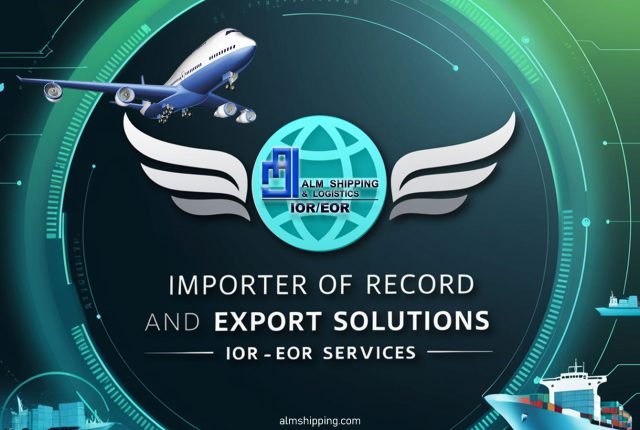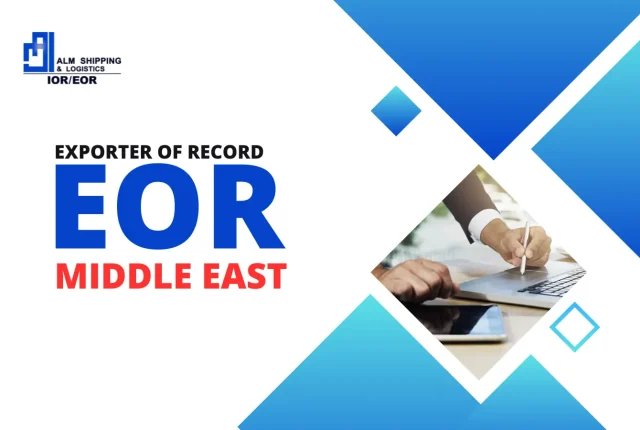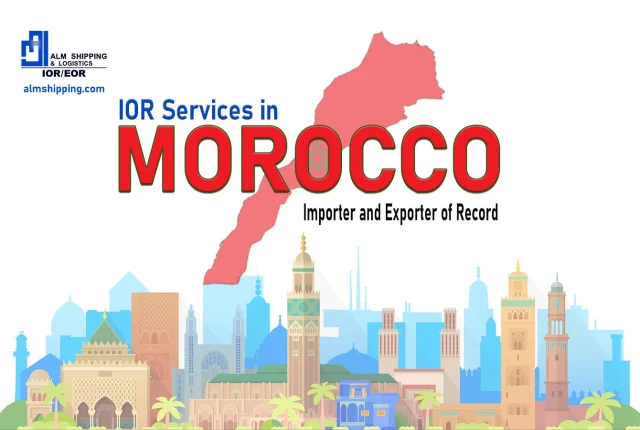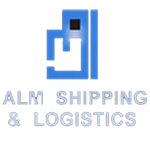
Asia-Pacific Trade Expansion: The Role of IOR/EOR
Asia-Pacific Trade Expansion & How IOR/EOR Powers Seamless Cross-Border Logistics | ALM Shipping & Logistics
he Asia-Pacific region is witnessing explosive growth in trade and logistics. The Asia-Pacific freight & logistics market is projected to hit USD 2.70 trillion in 2025, growing at a CAGR of ~6.34 % toward 2030.

The Asia-Pacific Surge in Trade
Factors fueling this include rising intra-Asian commerce (especially in Southeast Asia), infrastructure investments, and evolving supply chains reshoring from China to nearby nations.
In this context, businesses face complex rules across many jurisdictions. This is where IOR (Importer of Record) and EOR (Exporter of Record) services become indispensable in smoothing trade operations.
What Are IOR & EOR? (Simple Definitions)
| Term | Role | Key Responsibilities |
|---|---|---|
| IOR (Importer of Record) | The legal entity responsible for import compliance in the destination country | Managing customs duties, documentation, import licenses, taxes, classification, valuation |
| EOR (Exporter of Record) | The legal entity responsible for export compliance in the origin country | Overseeing export documentation, export controls, sanctions, declarations, and licensing |
In practice, a logistics provider like ALM Shipping may act (or partner) as IOR/EOR to simplify trade for clients.
Why they matter:
1. Ensure you don’t run into customs penalties or noncompliance.
2. Prevent delays or refusal at border.
3. Enable non-resident sellers to trade without local subsidiaries.
4. Reduce the burden on your internal teams.
The Asia-Pacific Trade Landscape & Challenges

Key Trends Shaping the Region
Route shifts & new corridors: Traditional routes are evolving. New hubs and alternative corridors are emerging to improve flexibility.
Digital & compliance tools: Blockchain, IoT, AI, and trade-tech platforms are raising the bar for logistics visibility and compliance.
Sustainability & regulation pressures: Emission limits, ESG requirements, and stricter customs scrutiny are on the rise.
Intra-Asia trade dominance: Much trade is happening within Asia itself not just East-West.
Common Challenges for Businesses
1. Navigating diverse customs rules across many countries
2. Handling sensitive products needing special licenses
3. Keeping up with export control / sanctions
4. Avoiding hidden duty & tax surprises
5. Gaining local presence or compliance legitimacy
In such an environment, having a trusted IOR/EOR partner becomes a competitive advantage.
How IOR / EOR Enable Smooth Trading in Asia-Pacific
Here’s how leveraging IOR/EOR services helps trade flourish:
✅ Simplified Compliance & Duty Handling
The IOR ensures that goods entering a country meet local rules classification, duty, valuation, licenses, etc. This removes a huge burden from the exporter or importer.
✅ Risk Mitigation & Accountability
With IOR/EOR, legal responsibility lies with the appointed entity, thus reducing exposure for clients or sellers unfamiliar with local laws. Truelog+1
✅ Faster Customs Clearance
Because documentation is prepared correctly, goods move faster through ports and fewer inspections or hold-ups occur.
✅ No Need to Set Up Local Entity
International sellers can operate in Asia-Pacific markets without a physical office or subsidiary; the IOR/EOR acts as local “agent”.
✅ Scalability Across Markets
A provider like ALM Shipping can scale IOR/EOR services across multiple APAC countries, providing consistency.
ALM Shipping & Logistics: Your IOR/EOR Ally
At ALM Shipping and Logistics (learn more on our Global IOR/EOR Services page) ALM Shipping & logistics, we offer:
>> End-to-end IOR/EOR compliance for import and export
>> Customs classification, duty & tax calculation
>> Documentation, licensing & trade control handling
>> Local representation in key Asia-Pacific markets
>> Seamless integration with freight, warehousing, and delivery
Real-world example:
A European electronics firm wants to sell into Vietnam, Thailand, and the Philippines. Rather than setting up offices in each, ALM acts as IOR/EOR managing customs, paying local taxes, and ensuring compliant imports. The firm benefits from smoother entry, lower risk, and reduced admin.

Frequently Asked Questions (FAQs)
Q1: Do I need both IOR and EOR?
If you’re exporting from one country and importing into another, yes, both roles matter. The EOR handles export compliance, and the IOR ensures import compliance.
Q2: Can IOR/EOR avoid paying duties?
No the IOR still pays all duties, taxes, and fees. What you avoid is the penalty, delay, or compliance risk.
Q3: Is EOR just for exporters in developed nations?
No any country with export controls (e.g. electronics, dual-use goods, sanctioned items) may require EOR oversight.
Q4: Can a logistics provider act as IOR/EOR?
Yes, many 3PLs or freight forwarders with compliance capabilities (like ALM) offer that service.
Q5: How much does IOR/EOR cost?
Costs vary by country, product category, value, and complexity. Generally, a small fixed fee + cost of duties and taxes.
The growth of trade in the Asia-Pacific region presents tremendous opportunities, but also regulatory complexity. Choosing the right IOR/EOR partner can convert complexity into competitive advantage.
ALM Shipping & Logistics is equipped to serve as your IOR/EOR partner across key Asia-Pacific markets, smoothing trade, reducing risk, and accelerating your cross-border operations.
👉 Ready to expand into Asia-Pacific smoothly?
Contact ALM Shipping & Logistics today to discuss tailored IOR/EOR solutions.






Leave a Reply